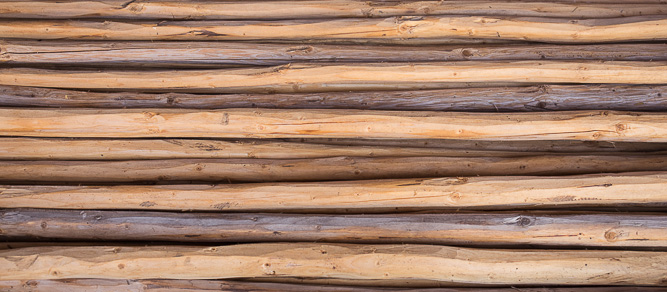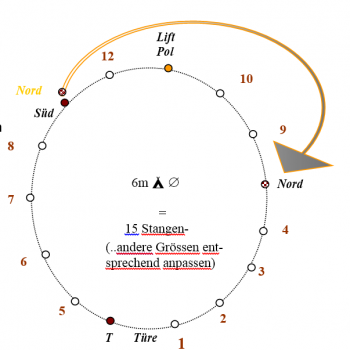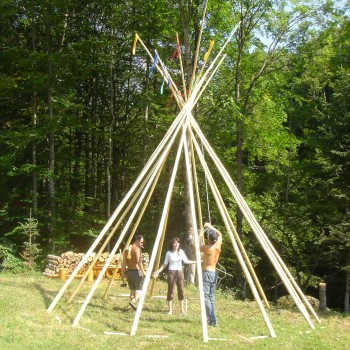THE TIPISTAN
Few or no trees grew in the North American steppe. Therefore the poles had a great value for the Indians (one pole = value of a horse). They often traveled hundreds of kilometers into the mountains to get their poles. The slender straight trunks of the Murray pine were best suited as tipi poles. Black larches, white cypresses and Virginia juniper were also used.
In Europe, these trees usually do not grow. Instead, we mainly use spruce, which are also ideal for the tepee construction. Even larches and pines or other softwoods can be processed into rods. Basically, only dry, straight bars are used. Fresh and still wet sticks are too heavy and bend slightly. In young forest stands we find the suitable straight-growing trees that are often felled and cut out as waste wood. Check with a forester if you would like to make your tipi sticks yourself.
The number of tip bars required depends on the size of the tipi and must always be divisible by 3 minus the two smoke flaps.
- 3 leg
- 2 x smoke flaps
- 1 x lift pole
| Tipigrösse | Num. rods | rod length |
|---|---|---|
| Ø 2.00 m | 9 pcs | 3m |
| Ø 3.00 m | 11 pcs. | 4m |
| Ø 4.00 m | 11 pcs. | 5 - 6 m |
| Ø 5.00 m | 14 pcs. | 6 - 7 m |
| Ø 5.50 m | 14 - 17 pcs. | 7 - 8 m |
| Ø 6.00 m | 17 pcs. | 8 - 9 m |
| Ø 7.00 m | 20 pcs. | 9 - 10 m |
| Ø 8.00 m | 23 pcs. | 10 - 11 m |
| Ø 9.00 m | 26 pcs. | 11 - 12 m |
CONDITIONS
The tipi poles should be dry, straight and the surface should be peeled smooth. The course of the rods should have a slim shape from the foot to the tip. The length of the poles is calculated from the tipi diameter + 1/3 to 1/2 diameter (6m tipi = 8-9m poles) but at least 1 to 1.5m longer. It is important that they are approx. 4-5cm thick at the crossing point in order to keep the opening as small as possible. A pole set looks more elegant if the poles protrude as pointedly as possible into the sky and the lengths vary slightly.
MATERIAL

Fir, spruce or pine tips are very suitable for tipi poles. The lighter bamboo poles are available up to 7m but are not as robust.
Bamboo poles easily absorb moisture, and when they dry out, they split due to the resulting tension. However, if the poles are drilled diagonally with a thin approx. 2mm drill for each scar, the tension is reduced and the life of the bamboo poles is increased.
Production of tipistangen
An important work is the debarking of the rods. If they are freshly beaten, peeling the bark with a bark peeler makes little effort. With rasp and sandpaper smooth the bumps and knots. This work should be done with endurance and care, as every knot, every bump serves as a drainage point for rainwater or pushes through the Tipi hull and may damage it. If the poles are sharpened at the lower ends with a hatchet, they will not slip so easily when setting up. On the other hand, they should be round above. This is especially important for the rods to regulate the smoke flaps, as they reach into the pockets should they have no sharp edges.
The sticks, freed from the bark and smoothed, should be allowed to dry for at least 3 months. To do this, you set them up like a tipi or store them in such a way that there is enough air everywhere to reach every pole. With the set-up variant, the rods have to be turned again and again so that they do not bend under their own weight.


